Agriculture, horticulture, and permaculture are a major component of the past, and now is being adapted to both the 2nd second machine age and 4th industrial revolution for achieving a sustainable future. They help protect our environment and ensure we have enough food, thus serving communities and larger civilizations through recent history. By combining these practices and knowing their historic relevance, we can grow sustainably and build a better world.
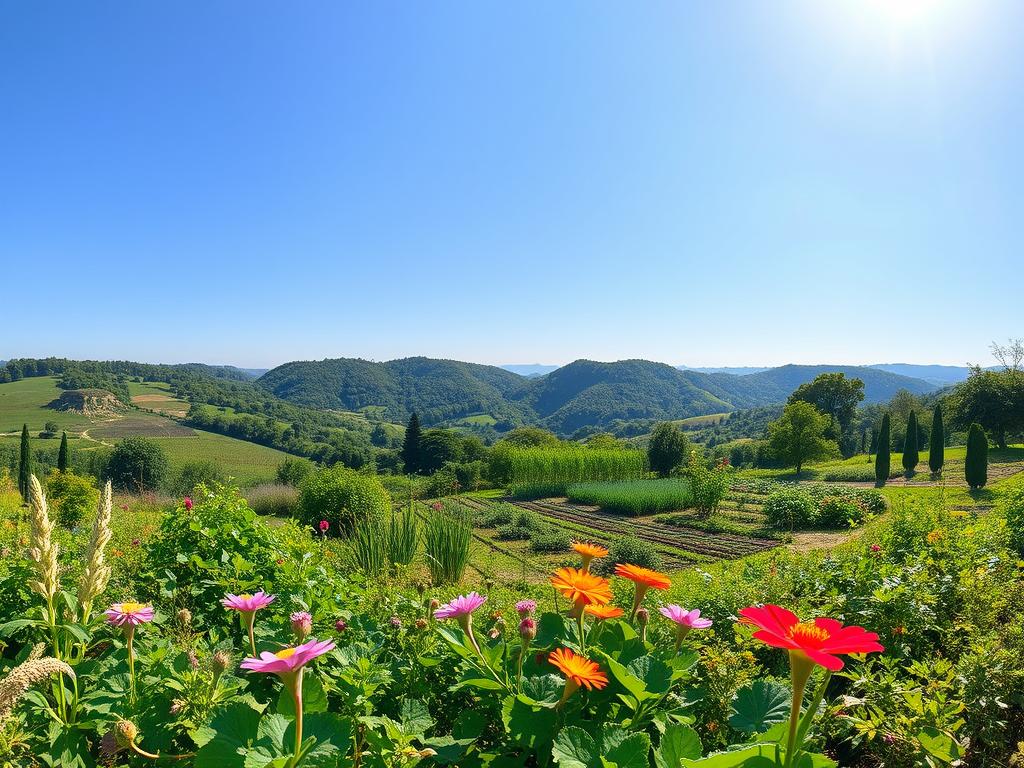
By applying and unifying best practices, it leads to a greener, healthier planet. They save our natural resources, cut down pollution, and keep our ecosystems diverse. By using sustainable farming and gardening, we help our planet and grow in a responsible way.
The Evolution of Sustainable Food Production Systems
Sustainable food production has changed a lot over time, centuries in fact. It moved from old farming ways to new horticulture methods and permaculture design. This change is because we need to make food and protect the planet at the same time. For centuries, farming has been about rotating crops and keeping soil healthy.
But now, with modern horticulture, we have new technologies and more efficient practices such as hydroponics and vertical farming. These methods help grow more food with less water. Permaculture design, which makes ecosystems work on their own, is also becoming more popular. By using these methods together, farmers can make food systems that are better for everyone.
- Improved soil health and biodiversity
- Increased water conservation and efficient use of resources
- Reduced chemical use and environmental pollution
- Enhanced ecosystem services and climate change mitigation
As the world’s population keeps growing, we need sustainable food systems more than ever. By choosing and supporting sustainable food ways, we can have enough food for everyone. We can also protect our planet and help local communities.

Agriculture vs Horticulture vs Permaculture with Sustainability Development
The debate on sustainability development between agriculture, horticulture, and permaculture is ongoing. Each has its own benefits and challenges. Knowing these differences is key to promoting sustainable practices.
Agriculture deals with big-scale crop production. Horticulture focuses on growing plants and managing gardens. Permaculture, however, aims to create self-sustaining ecosystems.
Some key differences between these practices include:
- Agriculture: large-scale, often relying on chemical fertilizers and pesticides
- Horticulture: smaller-scale, focusing on plant care and garden design
- Permaculture: holistic, emphasizing biodiversity and ecosystem services
By using sustainable practices from each, we can move towards sustainability development. This helps create a greener food system. Combining agriculture vs horticulture vs permaculture can lessen food production’s environmental harm. It also boosts social and economic benefits.
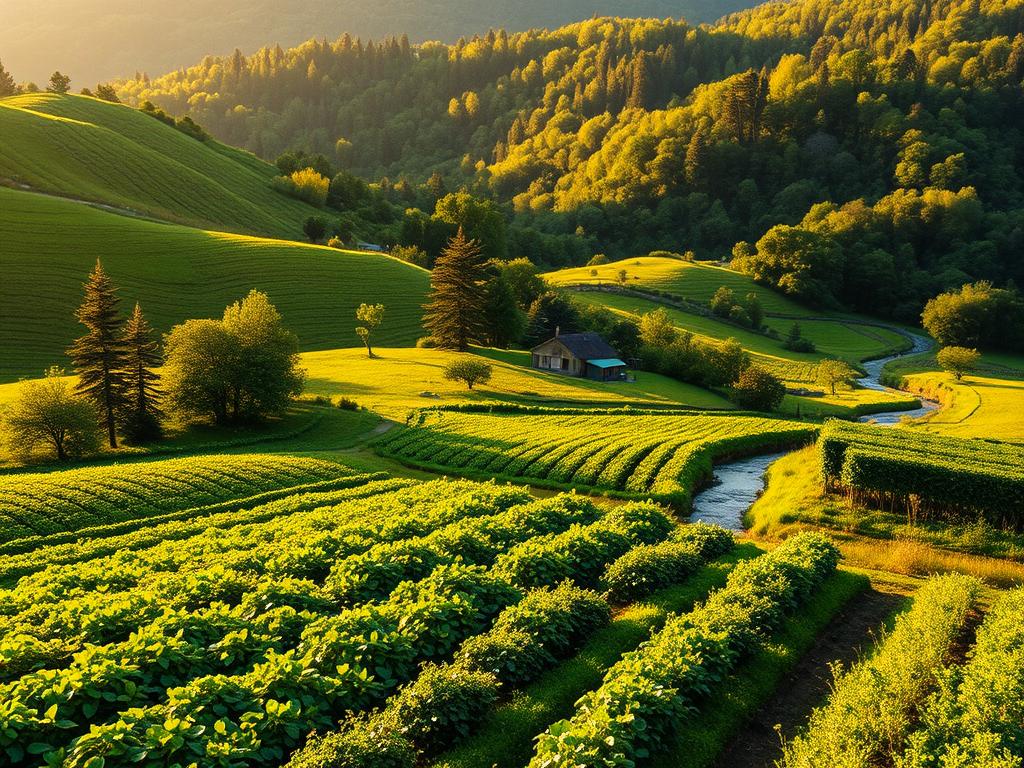
The choice between agriculture, horticulture, and permaculture depends on the situation and goals. Understanding each practice’s strengths and weaknesses helps us make better choices. This leads to a more sustainable future.
Environmental Impact and Resource Management
The world faces big challenges in sustainable development. We must think about how agriculture, horticulture, and permaculture affect the environment. It’s key to manage resources well to lessen harm.
Water conservation is a big part of this. Using methods like drip irrigation and mulching helps save water. This is important for keeping water available for everyone.
Soil health is also crucial. We need to use crop rotation, composting, and less synthetic fertilizers. This keeps the soil fertile and stops erosion. Healthy soil helps keep biodiversity and supports ecosystems.
- Using water-saving methods like rainwater harvesting and greywater reuse
- Improving soil health with regenerative agriculture and agroforestry
- Protecting biodiversity through conservation agriculture and ecosystem restoration
By using these strategies, we can lessen the harm of agriculture, horticulture, and permaculture. This supports sustainable development and resource management. It helps make a better environment for the future.
| Strategy | Benefits |
|---|---|
| Water Conservation | Reduced water waste, preserved water resources |
| Soil Health Management | Improved soil fertility, reduced erosion |
| Biodiversity Preservation | Promoted ecosystem services, supported human well-being |
Urban Farming Solutions and Cooperative Development
Urban farming is key to sustainable urban planning. It helps solve food security and environmental issues. Cities can cut down on carbon emissions and foster cooperative development among people.
Urban farming brings many benefits, such as:
- More food for everyone
- Cleaner air and water
- Stronger community bonds
Cooperative development is vital in urban farming. It lets people join forces for shared goals. For example, community gardens bring folks together to grow and share food.
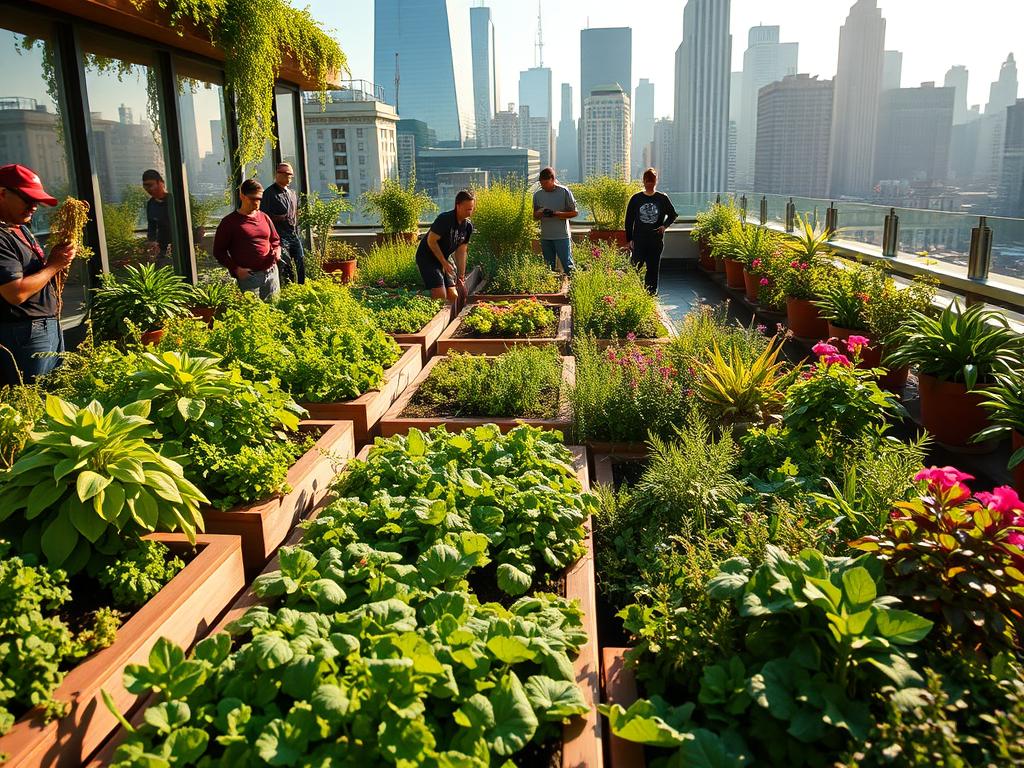
Urban farming thrives with support from local governments, businesses, and groups. These partnerships offer resources, know-how, and money. They help make urban farming a success and support sustainable urban planning.
| Urban Farming Benefits | Cooperative Development Benefits |
|---|---|
| Increased food production | Improved community engagement |
| Improved air and water quality | Enhanced cooperation among residents |
| Reduced carbon footprint | Increased access to resources and funding |
Regenerative Practices and Ecological Conservation
Regenerative practices and ecological conservation are key for sustainable farming. They focus on soil health, biodiversity, and water use. Farmers can lower their environmental impact while keeping production high.
Organic farming and natural pest management are important strategies. Crop rotation also plays a big role. These methods help protect natural resources and support ecosystems.
Benefits of these practices include:
- Improved soil health and fertility
- Increased biodiversity and ecosystem services
- Enhanced water conservation and efficient use
- Reduced environmental pollution and degradation
Many farms worldwide have seen success with these practices. For example, some have switched to organic farming and seen better soil and crops. Others use natural pest management to cut down on chemical use.
By using regenerative practices and focusing on ecological conservation, we can make our food system more sustainable. This approach needs a deep understanding of how farming, horticulture, and permaculture are inter-connected. It also requires a commitment to protecting natural resources for the future.
| Practice | Benefits |
|---|---|
| Organic farming | Improved soil health, increased crop yields |
| Natural pest management | Reduced chemical use, increased biodiversity |
| Crop rotation | Improved soil fertility, reduced erosion |
International Standards and Sustainable Reporting Frameworks
The world is moving towards more sustainable ways. International standards are key in making sure farming, gardening, and permaculture follow these guidelines. These standards help in sustainable reporting, letting companies show how they’re working towards green goals. They also help find areas to get better and guide in making things greener.
Some important parts of these standards and frameworks are:
- Environmental impact assessment
- Social responsibility initiatives
- Economic viability and profitability
By following these standards, companies show they care about the planet and are open. This builds trust and loyalty with their stakeholders. The United Nations says, “sustainable agriculture is key for reaching the Sustainable Development Goals (SDGs)”.
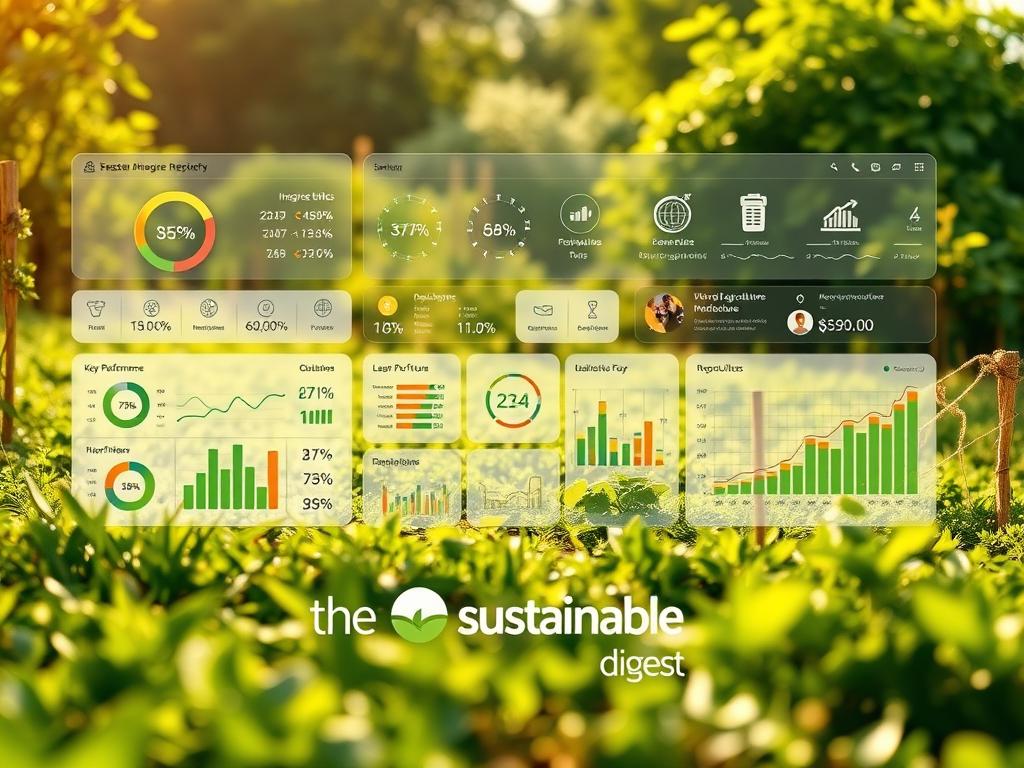
In summary, using international standards and sustainable reporting frameworks is vital for a greener future in farming, gardening, and permaculture. These tools help companies be kind to the environment, fair to people, and profitable. This way, they help make the world a better place.
Integration of ESG Principles in Agricultural Systems
Environmental, Social, and Governance (ESG) principles are key for farming to be both responsible and sustainable. These principles help make farming environmentally friendly, socially aware, and well-governed. Environmental considerations are especially important, as they reduce the harm farming can do to nature.
Here are some ways to apply ESG principles in farming:
- Do social impact assessments to see how farming affects people.
- Use governance in agriculture to manage and regulate farming well.
- Focus on environmental considerations to lessen farming’s harm to nature.
By using ESG principles, farmers and companies can make their farming sustainable and eco-friendly. This makes farming better for the planet and helps create a more sustainable food system.

| ESG Principle | Description |
|---|---|
| Environmental | Minimizing the negative impact of agricultural activities on the environment |
| Social | Conducting social impact assessments to understand the social implications of agricultural activities |
| Governance | Implementing governance in agriculture to ensure that agricultural activities are managed and regulated effectively |
Adopting ESG principles helps farming companies be more sustainable. They can lower their environmental impact and support a greener food system. This leads to farming that’s good for the planet, people, and well-managed, paving the way for a sustainable future.
Innovation in Sustainable Growing Spaces
The world faces massive challenges like climate change, food security, and environmental sustainability. Modern agriculture is turning to sustainable growing spaces for answers. These include greenhouses, container farming, and vertical growing systems. They change how we grow food, making it more efficient and kinder to the planet.
These spaces use less water, take up less land, and cut down on carbon emissions. For example, container farming lets farmers control temperature, humidity, and light. This leads to more food and less waste. Vertical growing systems pack a lot of crops into a small area, perfect for cities.
Here are some examples of sustainable growing spaces:
- Modern greenhouses: They use new materials and tech to control the growing environment. This creates the best conditions for many crops.
- Container farming: It grows crops in containers that can be moved and arranged to save space and boost efficiency.
- Vertical growing systems: These stack crops up high, often using hydroponics or aeroponics. This cuts down on water use.
As we need more sustainable food, these growing spaces are key. They help farmers grow more food while being kinder to the environment. This improves food security for everyone.
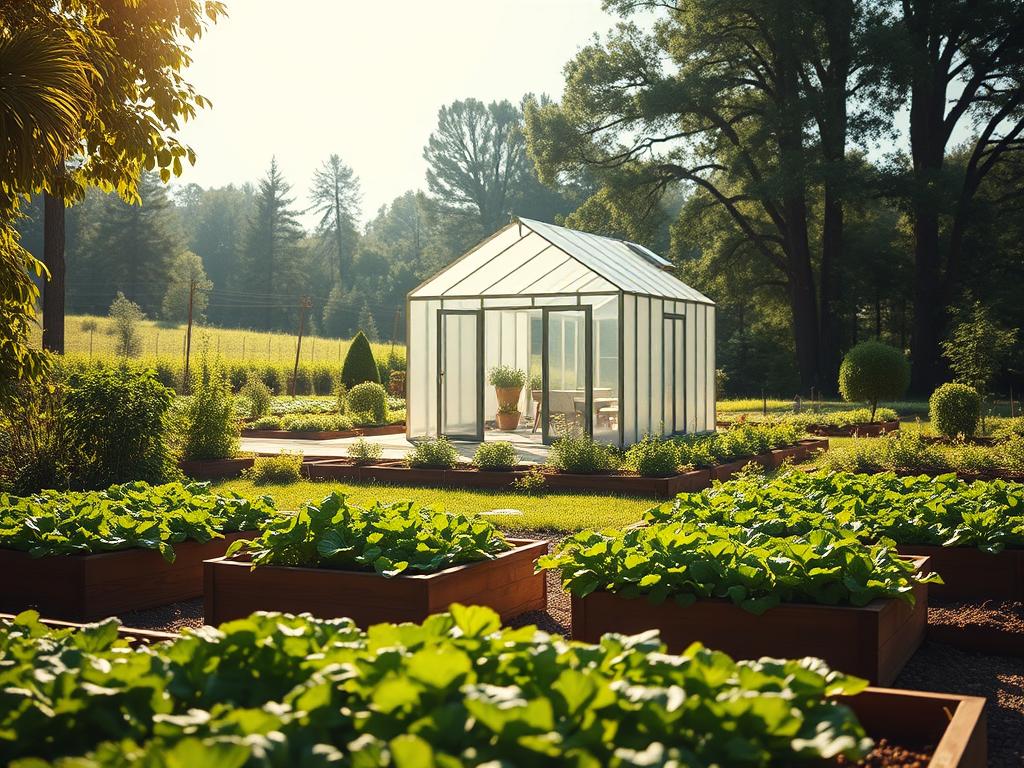
In short, sustainable growing spaces like greenhouses, container farming, and vertical systems are a bright spot for agriculture. They help us grow food in a way that’s good for the planet, people, and the economy.
| Sustainable Growing Space | Benefits | Challenges |
|---|---|---|
| Modern Greenhouses | Increased crop yields, reduced water consumption | High initial investment, energy consumption |
| Container Farming | Portability, reduced land use, increased efficiency | Limited crop selection, high labor costs |
| Vertical Growing Systems | Maximized space, reduced water consumption, increased crop yields | High initial investment, limited crop selection |

Conclusion: Creating a Sustainable Future Through Integrated Growing Practices
Exploring agriculture, horticulture, and permaculture shows us the power of integrated growing practices. These methods are key to a sustainable future. They help us tackle big environmental, social, and economic issues.
Using sustainable growing practices does more than protect the environment. It also makes food more secure and helps the economy. Organic farming, natural pest control, and crop rotation improve soil health and save biodiversity. This reduces our need for harmful chemicals.
This approach makes our food systems more sustainable and benefits our communities. Looking to the future, using integrated growing practices can make a big difference. Supporting urban farming, using modern greenhouses, and vertical growing can create sustainable food systems in cities.
This teamwork, based on ESG principles, brings agriculture, horticulture, and permaculture together. It promises a future where these practices work together. This is how we can achieve a truly sustainable tomorrow.
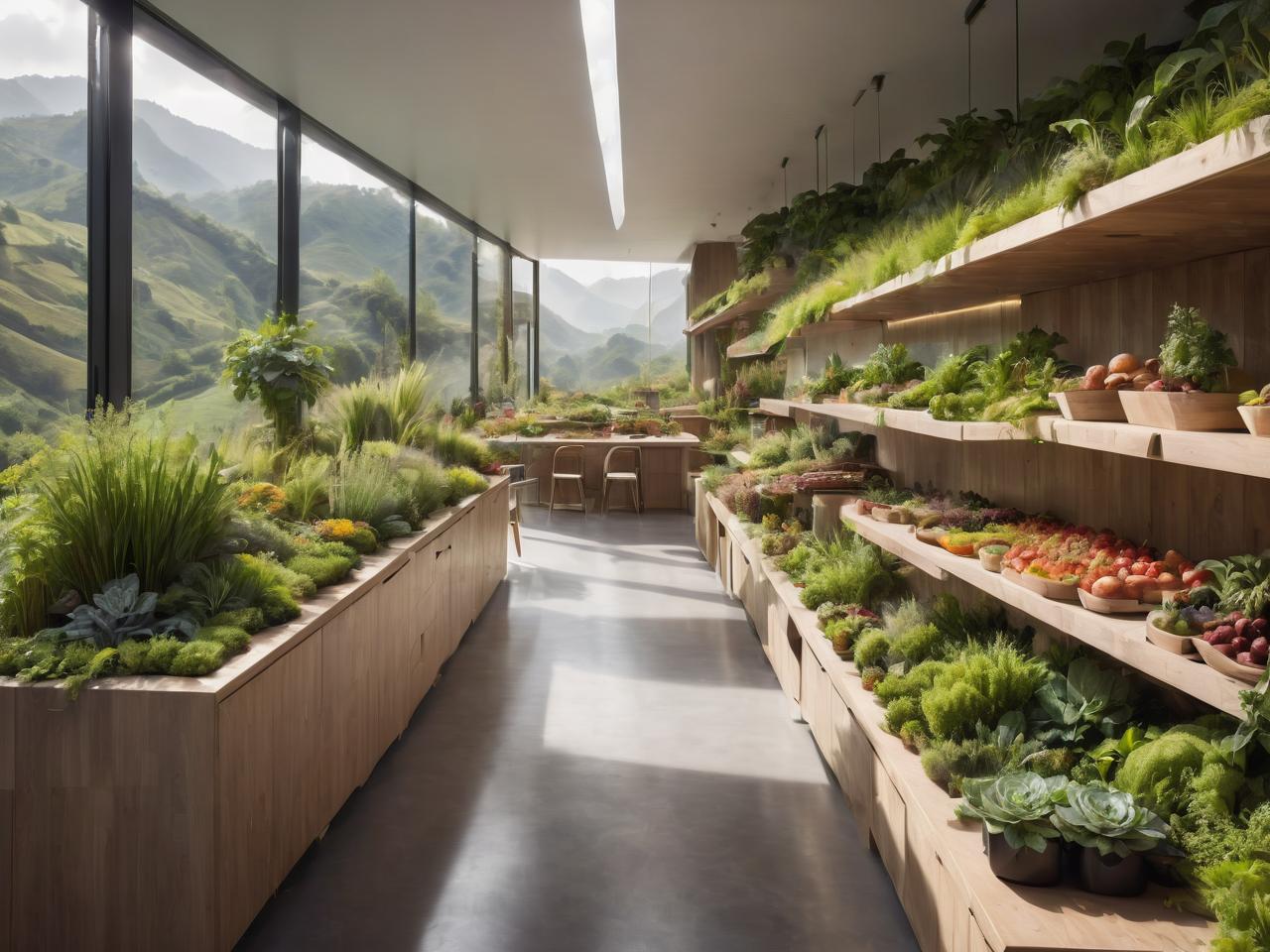
Key Takeaways
- Agriculture, horticulture, and permaculture are vital for sustainable development and environmental conservation.
- These practices promote food security and economic stability.
- Sustainable growth is essential for a better future.
- Integrating agriculture, horticulture, and permaculture practices can help conserve natural resources.
- Permaculture design and sustainable horticulture methods can reduce pollution and protect biodiversity.
- Agriculture, horticulture, and permaculture practices contribute to sustainable development and environmental conservation.
